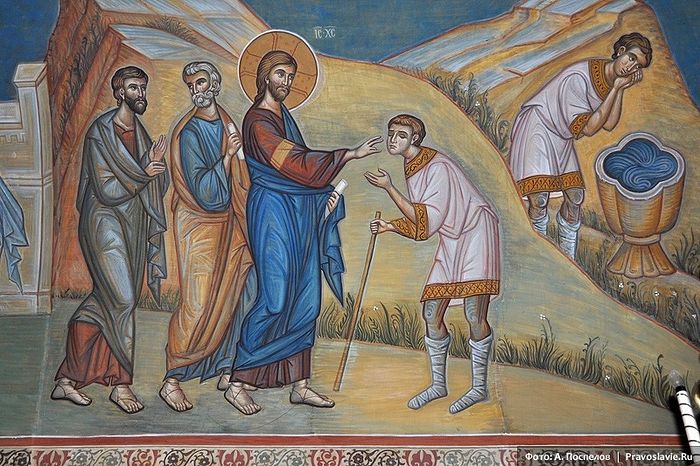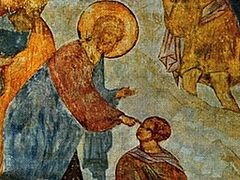The blind man from the Gospel gained both bodily and spiritual sight. He no longer needs a walking stick—neither a physical, nor a spiritual one. With the help of the former, he reached the pool of Siloam, and with the latter—the Ever-flowing Fount. The former was, possibly, left behind near the pool or given to one of the blind paupers; but the latter he hands to those who are still wandering in spiritual darkness. The latter is not the kind of walking sticking you would search for in specialty stores or make out of a broken tree branch, but rather is one that’s been placed inside of the Holy Gospel by the apostle John. Take it, those who desire it.
Are there many that desire it? No, there are but a few.
There are few people who, like the blind man, sincerely ask: “Who is He, this Christ, that I might believe in Him?” (See: John 9:36).
Here is a typical introductory conversation with an adult who wants to be baptized and become a member of the Church.
“In order to be baptized, Christian faith is necessary. Are you a believer?”
“Yes, I believe in God.”
“Do you believe in Christ the Savior?”
“Yes, of course.”
“And who is He, Jesus Christ, in whom you believe? What do you know about Him? Why do you want to become His follower? Have you read the Gospel?”
“I don’t know. No, I haven’t read it. Why is this necessary? I have faith in my soul.”
As you can see, such a person does not know how to make use of this walking stick—you have to slip it into their hands. Take it; take the same question of the blind man, take his desire to understand everything and make a meaningful step towards Christ, in order to worship Him sincerely. Take it!
Some take it, but others don’t.
It’s interesting how Christ answers the blind man: Thou hast both seen him, and it is he that talketh with thee (John 9:37). There’s something worth thinking about here. First of all, taking into consideration the words used in the Greek, we can translate the passage as follows: “You have gained sight, begun to see and now see Him…” Then the Lord adds, “and it is He that talketh with thee” in order to draw the previously blind man’s attention to his auditory memory. After all, a blind person’s sense of hearing, and likewise their auditory memory, is much better developed than that of the sighted. Christ is sort of saying to him: “Compare the voice which sent you to the pool of Siloam with My voice. It was I. Back then you only heard me, but now you can see me as well. I am the Messiah.”
I think that when someone picks up the New Testament, they have to experience something similar themselves. When they hear the voice of Christ, resounding from the verses of Holy Scripture, they have to compare it with that inner voice that spoke about having “God within one’s soul”, the Voice that spoke in them before, that led them to open up this Bible, that gave them the strength to live and keep going. Keep going where? To Him!
Do you hear? It is He!
And now take a closer look at Him, at His eyes full of love and compassion, at His deeply-pierced side, at the wounds on his hands and feet, and at the glorious radiance of His (and, therefore, your own) Resurrection!





